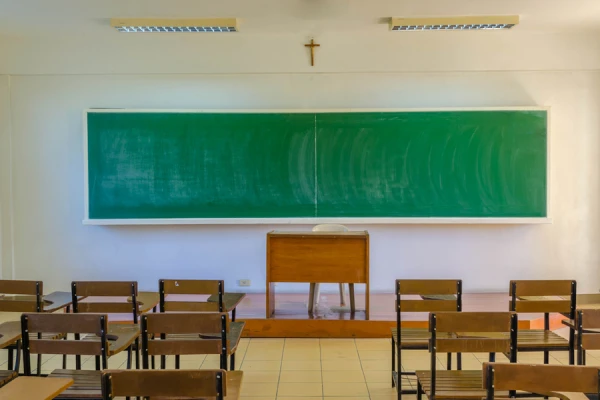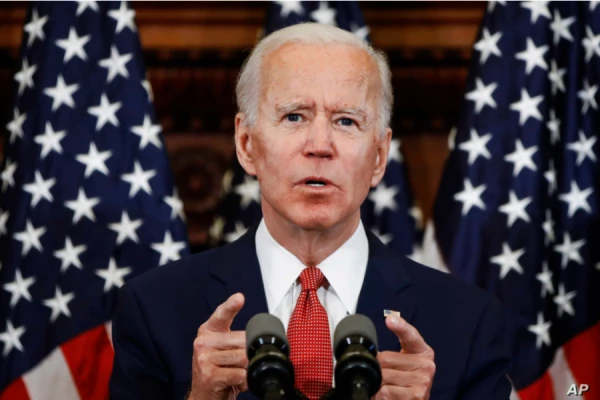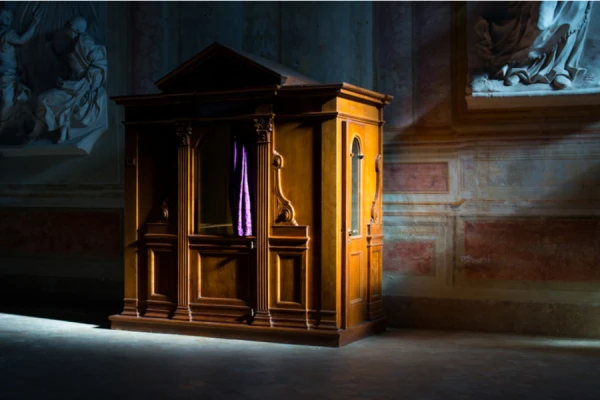
Washington, D.C. Newsroom, Jul 27, 2020 / 02:10 pm (CNA).- As Catholic schools prepare to reopen for in-person and remote learning in the fall, teachers and staff are bracing for the challenges both to students’ health and their education.
On Saturday, CNA reported across various diocesan and archdiocesan Catholic schools that plan to reopen for in-person learning this fall, and those which are planning for virtual-only learning.
But, educators warn, each route carries its own set of challenges to upholding the safety of students, staff, and the broader public during the pandemic, while ensuring that students do not fall behind in their learning.
Tim Hruszkewycz, a high school English teacher at Villa Madonna Academy in Northern Kentucky, said that his school is reopening full-time in the fall, with no virtual learning.
The school has moved his class to a larger room and provided an outdoor area for teaching as well, which is weather-dependent, Hruszkewycz told CNA, and is requiring all students to wear masks.
“It’s slightly scary,” he said. Though confident that students at the school will abide by the mask requirement, he noted that high school students are more likely to carry and spread the virus than are elementary school children.
In March, Hruskewycz told CNA of how he had to suddenly adjust to teaching classes virtually as the school closed during the COVID-19 pandemic. What followed at the school was an “amazing success story,” he said, as he was still able to cover plenty of material with the students for the rest of the semester.
However, he admitted, “we were the exception to the rule,” as he heard of many other schools where students had trouble learning at home.
While teaching in-person might be easier than teaching a class remotely, there are special risks and challenges involved in hosting full-time in-person classes, he said.
Hruskewycz said that he and his wife are expecting a newborn child on the first scheduled day of school, and that he is “terrified” of potentially contracting the virus at school and bringing it home. While the school may control the hygiene of students during the school day, it cannot control for the behavior of students outside of school, he said.
Furthermore, a community of Benedictine nuns, the Sisters of St. Walburg Monastery, reside on campus and some of the sisters occasionally serve as substitute teachers at the school. Many in the community are getting older and are more at risk from the virus, Hruszkewycz said.
The quality of the students’ education during the pandemic is also in question. If schools reopen, only to shut down again during the semester due to a COVID outbreak, the students might not learn as much as they would if the school stayed virtual the whole time, he said.
Hruszkewycz said that in the spring of 2020, he was still able to teach around 75% of what he would have taught in a normal classroom.
“I’d rather they get a good 75 than a broken-up 100,” he said, comparing virtual learning to in-person learning that is interrupted by closures.
In California, schools are currently slated to reopen virtually.
On July 17, Governor Gavin Newsom set new standards for schools throughout the state to reopen in-person, standards which 33 counties in the state currently do not meet. The Los Angeles archdiocese, which had initially planned to reopen its schools for in-person learning in the fall, had to change course and prep for virtual learning.
In response, the state’s Catholic bishops sent a letter to the governor asking for his administration to grant local governments more flexibility to give waivers for Catholic pre-K, elementary and high schools to reopen.
“We understand that the threat of the coronavirus is real and ongoing in our state,” the bishops wrote. “At the same time, we are deeply concerned about the broader health and development issues for our children if the state presumes to rely only on distance learning until a vaccine is developed.”
“In-person learning, especially at the lower grades, provides emotional and social skills and supports that are crucial to early childhood development and the overall wellbeing of children which simply cannot be replaced,” the bishops said.
In the Diocese of Orange, diocesan superintendent Dr. Erin C.O. Barisano oversees 41 Catholic schools. He told CNA that they still hope to be allowed by the state to reopen in-person by September.
“Each school has prepared an extensive reopening plan that adheres to local health and safety guidelines and each school is prepared to pivot from distance learning to in-person instruction at any given time,” said Barisano.
Virtual learning brings with it its own set of unique challenges, namely, the ability of each student to have the technology to access the remote classroom. Most schools in the diocese, Barisano said, are issuing devices to students, while “a few” other schools have had a requirement in place for more than five years that families provide the devices themselves for learning.
In addition, the diocese is offering a professional development program for teachers to work with parents on ensuring remote learning access for the students, and is also utilizing the program Basecamp to that end.
“We believe that parents are the primary educators of their children and distance learning has given us a greater opportunity to partner with them,” Barisano said.
The diocese also released reopening standards for its schools based on federal and state guidelines. Each school tailors its own reopening plan based on the diocesan standards.
One high school is using an outdoor parking space for choir classes, and some elementary schools are using the parish halls or outdoor lunch tables as classrooms.
The onset of the coronavirus pandemic caused the mass closure of businesses and fueled an unemployment rate that currently hovers above 11%. Many charities have already faced a sharp drop in donations, and tuition-dependent Catholic schools are faced with a similar problem. The Boston archdiocese, for example, announced in June that 10% of its schools would close.
“For Catholic schools, declining enrollment and financial challenges directly impact the level of service we are able to offer,” Barisano said.
If you value the news and views Catholic World Report provides, please consider donating to support our efforts. Your contribution will help us continue to make CWR available to all readers worldwide for free, without a subscription. Thank you for your generosity!
Click here for more information on donating to CWR. Click here to sign up for our newsletter.





Leave a Reply